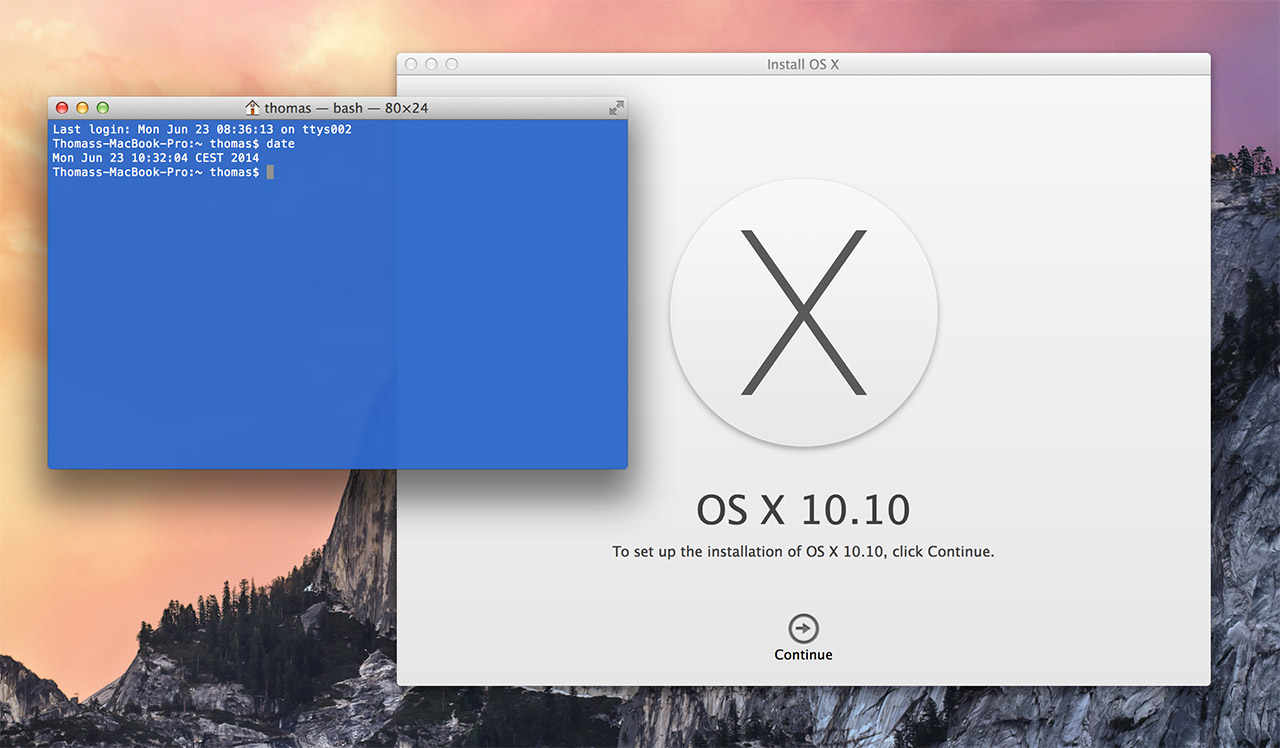Mac computers are a popular addition to small businesses given their power, reliability and customer service. When dealing with peripheral devices that many small businesses have, you may need to access the Mac's booting firmware, known as the BIOS on Windows machines. If your Hackintosh already has Mac OS X Snow Leopard, Lion, or Mountain Lion installed, the only thing you'll need to change in the BIOS is the 'Boot Device', so that USB drives have highest priority. If your Hackintosh doesn't have any version of Mac OS X installed yet, you have to change a few extra BIOS.
I want install Mac os yosemite in legacy mode enabled bios 10:16 AM - edited 10:20 AM This is NOT official HP Customer Support and I. To access BIOS / UEFI Setup, Press and hold Delete button on a USB Keyboard while the system is booting up. Load Optimized Defaults. Set USB drive to the highest boot priority. If your CPU supports VT-d, disable it. Disable CFG-Lock. Ati 5770 driver. Disable Secure Boot Mode; If your system has OS Type, set it to Other OS. Set OS Type to Other OS.
You set your Mac or Macbook which disk to start up from when more than one startup disk is connected. This works for USB drives including the NinjaStik
For 2018 to 2020 Macs with the Secure Boot T2 Chip, see the 2020 Macbook Pro Boot from USB instructions.
A 'startup disk' is a volume or partition of a drive that contains a bootable operating system.
You can set your Mac to automatically use a specific startup volume, or you can temporarily override this choice at startup.
Set the default startup disk You can change the startup disk your Mac automatically uses from System Preferences.- From the Apple menu choose System Preferences.
- Click the Startup Disk icon in System Preferences, or choose View > Startup Disk.
- Select your startup disk from the list of available volumes.
The next time you start up or restart your computer, your Mac starts up using the operating system on the selected volume.
Temporarily change your startup disk with Startup Manager
Startup Manager allows you to pick a volume to start from while the computer is starting up.
Use these steps to choose a startup disk with Startup Manager:
- Turn on or restart your Mac.
- Immediately press and hold the Option key. After a few seconds, the Startup Manager appears. If you don't see the volume you want to use, wait a few moments for Startup Manager to finish scanning connected drives.
- Use your mouse or trackpad, or left and right arrow keys to select the volume you want to use.
- Double-click or press the Return key to start up your Mac from the volume you selected.
If you have an optical drive connected to your computer, you can insert an installation disc to see it in Startup Manager. You can also attach FireWire or USB external hard drives that contain an operating system to add to the list of startup volumes.
Startup Manager automatically adds bootable volumes as you connect them.
Restart in OS X from Boot Camp
If you have started up your Mac in Windows using Boot Camp, you can use the Boot Camp system tray to switch your startup disk default back to OS X.

- In Windows, click the Boot Camp icon in the system tray.
- From the menu that appears, choose Restart in OS X.

- In Windows, click the Boot Camp icon in the system tray.
- From the menu that appears, choose Restart in OS X.
Start from OS X Recovery
You can also start your Mac from OS X Recovery or Internet Recovery if your Mac was manufactured after 2011.
Proxy program for mac. Bypass proxy software for mac free download. Traefik Traefik (pronounced traffic) is a modern HTTP reverse proxy and load balancer that makes deploying m. MacProxy provides system-wide network proxy support for the Mac. It forwards network traffic from applications that do not support proxies and avoids complex setup for applications that do.
To start your Mac from the Recovery System, use these steps:
- Start up or restart your computer.
- Hold down the Command and R keys on your keyboard until you see the Apple logo appear onscreen.
Macbook Pro Bios Menu
If you don't see a volume listed
Bios Setting For Mac Os X On Pc
If you don't see the volume you want to start your computer from, check the following:
- If you're using an external drive, make sure it's connected and turned on.
- Make sure you've installed an operating system, like OS X or Windows on the drive you're trying to start from. Volumes that don't contain a valid operating system aren't listed in Startup Disk or Startup Manager.
- If you've installed an operating system on a drive but it isn't listed, the volume you're trying to start from might need repair. If the volume contains OS X, start your computer from OS X Recovery and use Disk Utility to repair the volume, or reinstall OS X on the volume using the Recovery System.
- Depending on the Mac you are using and the version of OS X that is installed, the Recovery System volume (Recovery HD) might not show up in Startup Manager. Press Command-R during startup to start your Mac from the Recovery System.
Bios Setup Mac Os X
For 2018 / 2019 Macbook Pro with the Secure Boot T2 Chip, see the 2018 Macbook Pro Boot from USB instructions.
